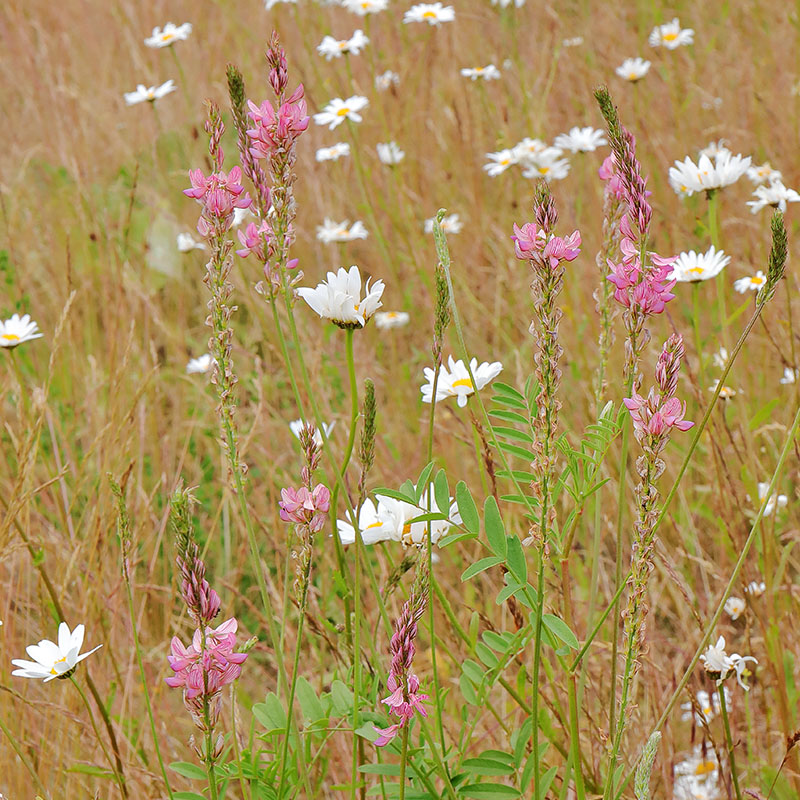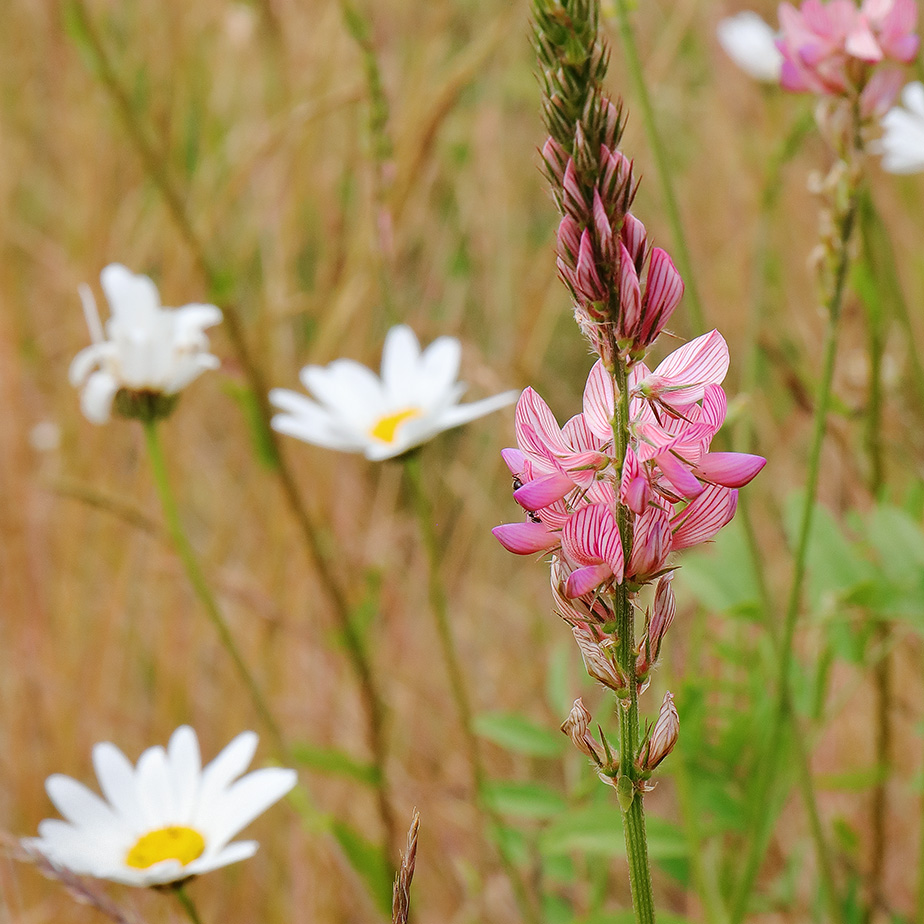NB: A note for WordPress Reader users – you need to click on the title of the post again to see the full photograph. (Otherwise you see just a tiny section!)
The flowers of sainfoin (Onobrychis viciifolia) were sprinkled throughout the meadow that I wrote about in last week’s post. It’s a plant that I had never seen before. I was enchanted by the spikes of delicate pink flowers with darker pink veining, so I took the opportunity to photograph it.
Reading up about this grassland plant afterwards, I discovered that it is a native of Europe and Asia. Sainfoin is an ancient forage crop grown to feed cattle, sheep and horses. It fell from favour in modern times but is apparently making a comeback. The plant has several benefits, including controlling worms in grazing animals and improving the quality of the soil by fixing nitrogen. (The common names of ‘healthy hay’ and ‘holy hay’ reflect the benefits to livestock.)
But it’s not the usefulness to animals that caught my attention. I’m far more interested in the benefits that sainfoin offers to bees and other pollinators. Apparently sainfoin produces large amounts of both pollen and nectar, making it very attractive to pollinating insects, including bumblebees and butterflies.
This suggests that it would be worth growing in a selection of wildflowers for a semi-wild area that will be a habitat for wildlife. It’s an idea that appeals to me greatly, but I would need to be able to fit my wild patch into a small space. A possibility for next year… 🙂


Pretty flowers indeed. Easy to see why you’d want to photograph them.
‘Healthy hay’ is what sain foin means in French. The fact that it sounds exactly the same as saint foin has led to the alternate (and mistaken) English name ‘holy hay.’
LikeLiked by 1 person
Yes, the pronunciation of the two being the same must be confusing in other cases too. I was intrigued by the similarity to Scots ‘saining’ – ritual conferring of a blessing or protection, especially at times like New Year. But that’s coincidental, with the words having different origins.
LikeLike
I see that Scots got sain from Old English segnian, which had come from the Late Latin extended Christian sense of signare,. The basic meaning in classical Latin had been ‘to mark’.
LikeLiked by 1 person
I like your meadow beauties! Pretty pink and white!!
LikeLiked by 1 person
Their prettiness really caught my attention Indira! 🙂
LikeLike
Never come across this bit it looks like the ideal meadow wildflower.
LikeLiked by 1 person
I wonder what it would be like planted in the garden – it’s supposed to improve the soil by making nitrogen available to other plants. It could be an interesting experiment and a feast for visiting bees too.
LikeLike
You might be able to collect some seeds and get them to grow.
LikeLiked by 1 person
There are a number of websites where you can buy the seeds, so I may well do that… 🙂
LikeLike
Believe it or not, I once wrote a post titled “The Saining of Speech,” and yes, indeed: it had to do with culture in your part of the world. What’s brand new to me is that flower. My goodness, it’s beautiful. The veining seems unusual. I can’t remember seeing another flower with that sort of pattern, although they surely must exist. Given that meadow-type environments are being developed in church yards in England, it must be possible to fit them into smaller spaces.
LikeLiked by 1 person
Here we are encouraged to allow even just a small patch of grass to grow long and to allow some wildflowers to grow there, so yes, I think that a mini-meadow has possibilities. I have a sunny corner of the garden in mind – there’s an informal seat there, so it could be a spot for watching the bees get busy. 🙂
LikeLiked by 1 person
What fun that would be! I’ve come to enjoy bee-watching, and a spot like that sounds perfect.
LikeLiked by 1 person
It looks and sounds like a wonderful addition to any wildflower garden! I hope you can a way to make one happen.
LikeLiked by 1 person
I hope so too – it would be a great project for next year. 🙂
LikeLiked by 1 person
It’s good to have a project to look forward to (and to plan during the long, cold winter days). 😊
LikeLiked by 1 person
That is a lovely flower indeed, Ann. We have a flower called :Meadow Beauty that has a very different appearance. I hope you find a spot to grow these for your own.
LikeLiked by 1 person
Steve, you made me realise that I might confuse readers into thinking ‘meadow beauty’ was a common name for the plant, rather than just my title – so I added an ‘A’ at the start. But I do think it makes an excellent name for a wildflower. (And they’re now on my list of plants to grow) 🙂
LikeLiked by 1 person
I understood that you were describing the plant rather than name it but it did bring to mind ours with that name.
LikeLiked by 1 person
Ah, that’s good then, Steve. You can never be sure when there are plant names like this. It’s something I’ll think about a bit more!
LikeLiked by 1 person